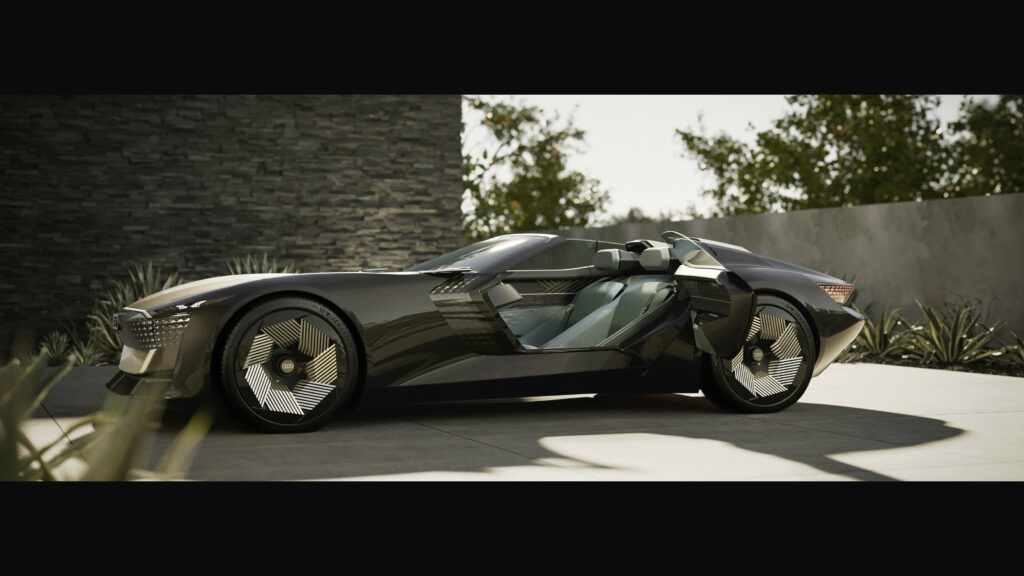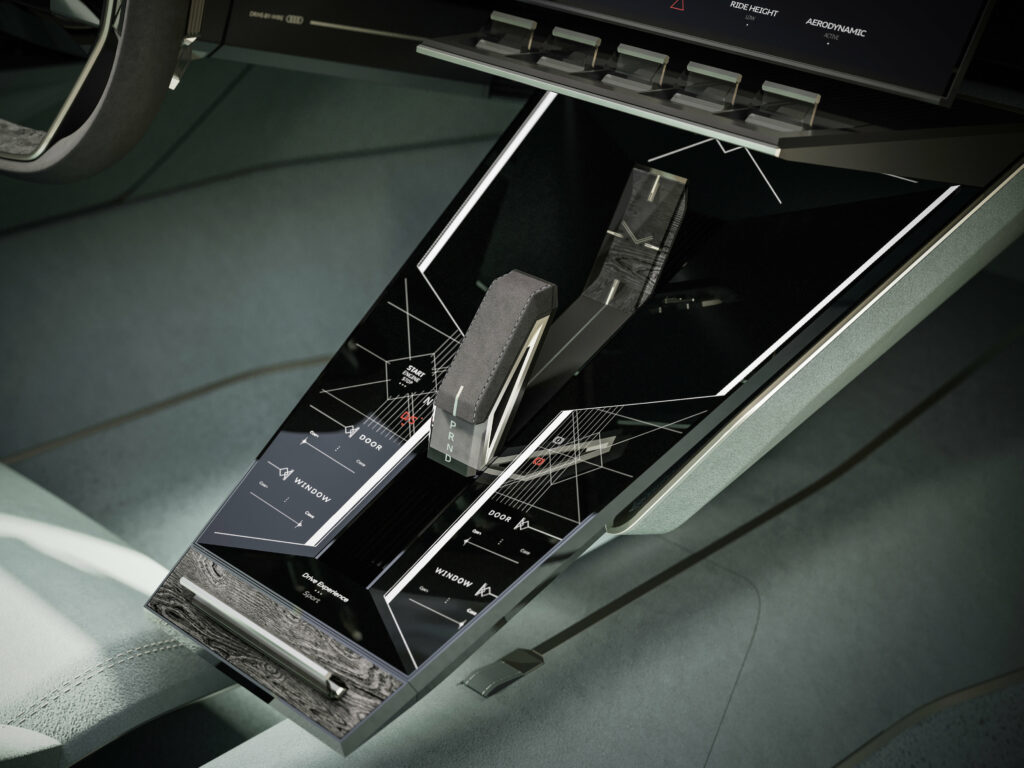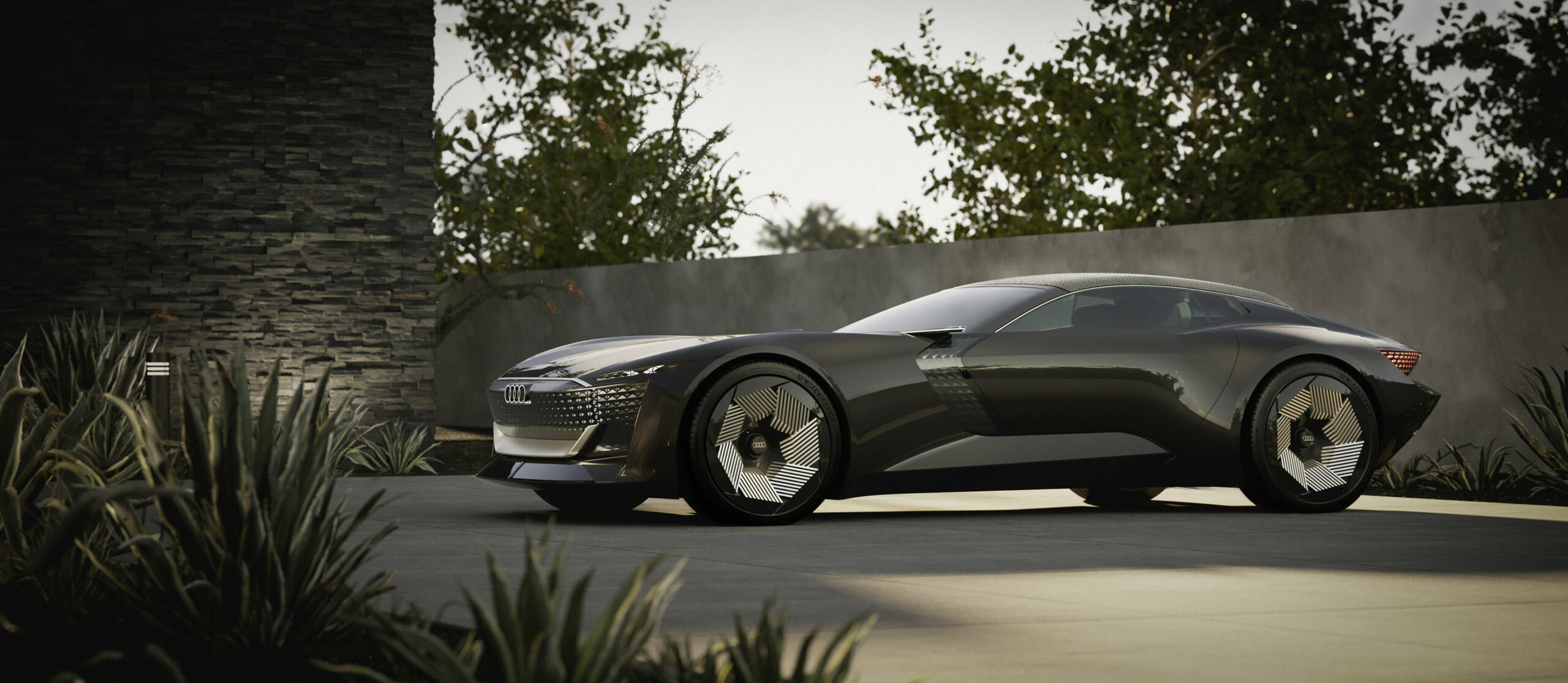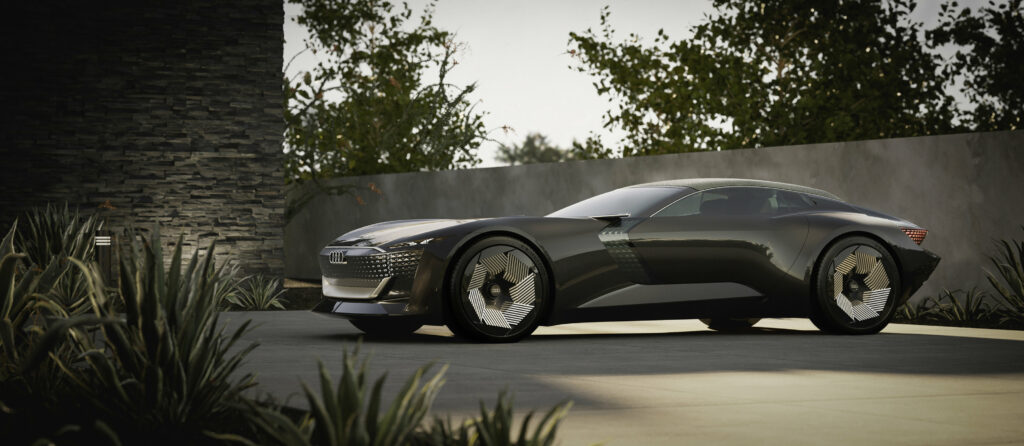
Audi will be introducing their new Skysphere concept for the first time, which they will be showing off in Pebble Beach this week. The car, still only a concept, gives us a glimpse into the future of Audi design and engineering. When we first heard about the Skysphere, Audi seemed a little evasive. They told us it was a sports car, but they also said it was autonomous.
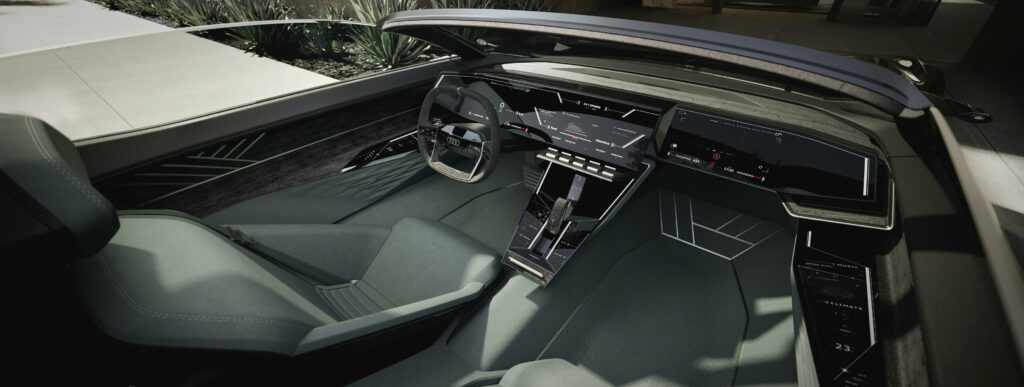
It seemed like they couldn’t explain their story. Well … it makes sense now. It’s both.
The Skysphere’s main feature is that it has two “modes” of driving, Grand Touring and Sports.
The first, Grand Touring mode, harks back to the classic Grand Touring cars of the 1930s: a low two-seat roadster with a long wheelbase, long hood, luxurious interior-all built for good performance, but primarily for long drives in the countryside. This was the era when people really started to enjoy driving for the sake of driving, to see where the road would take you.
The second, sport mode, provides an aggressive and athletic ride with improved handling and a more commanding and coherent presence for the driver.
But we’ve seen driving modes before. There’s nothing surprising about them. In fact, they’re often a bit silly, simply by changing the throttle position, ground clearance height or some other minor aspect of the car.
So what’s different about the Audi concept? The whole car changes shape, and quite dramatically.
While Grand Touring cars have always been sporty, they were also a compromise of sorts, and the long wheelbase and comfort-driving orientation interfered with some of the driving characteristics of these cars and made them feel less responsive than a smaller roadster-style sports car.

So Audi’s idea was this: how to create a car that would work perfectly as a Grand Touring or as a sports car, but without having to compromise between the two?
The Skysphere concept managed to combine the strengths of both types of car thanks to a variable wheelbase. In Grand Touring mode, the Skysphere is 201 inches long (5.19 meters), while in Sports mode it’s reduced by almost 10 inches (250 mm).
But the changes don’t stop there. In Grand Touring mode, the steering wheel, pedals and gearshift lever enter the dashboard and provide Level 4 autonomous driving. It’s a mode in which the driver and passenger can look around their surroundings without taking their eyes off the road.
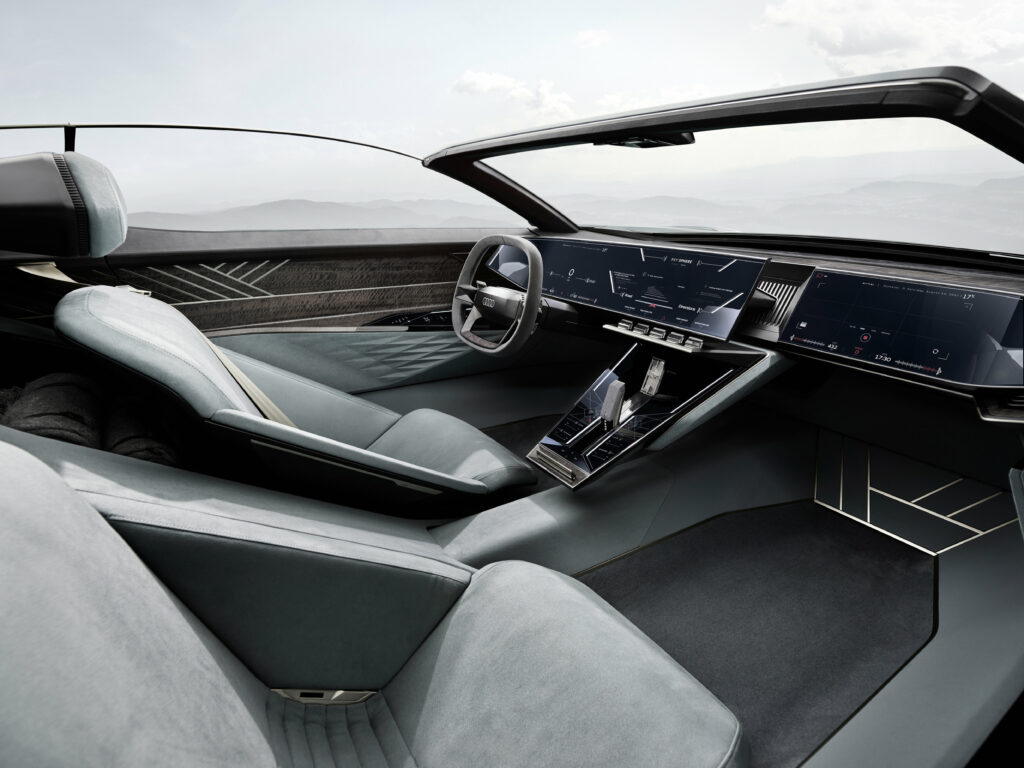
In Sport mode, the interior shifts to a more driver-oriented configuration, shifting the driver and passenger seats and bringing the dashboard closer to the driver to provide a more comfortable driving experience. There’s even a small glove box above the steering wheel, large enough to hold a pair of driver’s gloves.
Audi drew inspiration from the classic Horch 853 Roadster when developing the Skysphere concept, though it wanted to keep that inspiration limited. Audi calls it “reverence without retro” – a reference to the big touring cars of the time, but using modern technology to create a new design in the same spirit. The car’s long hood is reminiscent of the design of those old Grand Touring cars, but instead of a massive engine, there’s a “trunk” big enough for two golf bags.
The car’s grille has adjustable lighting that changes depending on driving mode, which can be a useful way to alert other drivers that the car is driving itself.
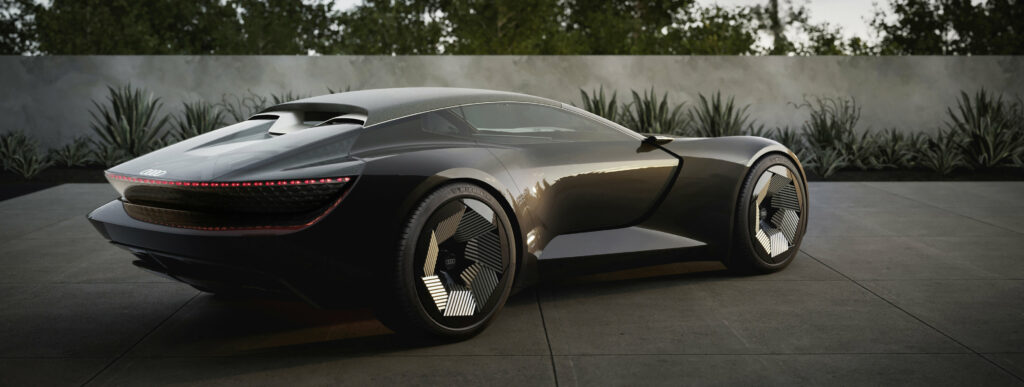
In the rear, the car is powered by an 80 kWh battery, rated at up to 310 miles (500 km) according to WLTP estimates. This battery is located behind (and partially between) the low-slung driver and passenger seats. The weight remains in front of the axle (similar to a mid-engine sports car), which contributes to a 40/60 F/R weight distribution over a total weight of 3,968 pounds (1,800 kg).
The car is purely rear-wheel drive, a rarity among electric cars. It is powered by a single engine with 623 hp. (465 kW) between the rear wheels, which can accelerate the car from 0 to 100 km/h in four seconds. This battery weight contributes to good traction for the 285mm wide rear tires, which should create a very stable feel when accelerating.
This arrangement of the battery is different from what has become standard – putting the battery on the floor of the electric car. While the Skysphere’s battery placement loses a bit of its center of gravity, it gets a lower and more aggressive landing. And a battery attached to the bottom would not work well with a car with an adjustable wheelbase anyway. Thus, the batteries ended up in the rear
